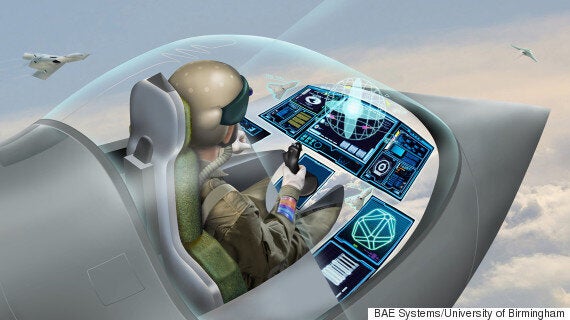BAE Systems is no stranger to the concept of augmented reality thanks to its Striker II combat helmet. However until now the technology has usually required a billion-pound fighter jet and a large bulky helmet.

Well now the company has teamed up with the University of Birmingham to move beyond the cockpit and create a Google Glass style pair of glasses which can turn almost any surface into a virtual command centre.
Similar to Microsoft's HoloLens headset, BAE's creates what it calls a 'mixed reality' combining the real world with a virtual interface that can project a battlefield onto any surface combined with real-time video chat and live feeds.
The team came up with two concepts, one designed for soldiers on the ground and the second which would create a virtual cockpit for pilots.

While BAE's Striker II helmet simply adds augmented reality to a physical cockpit dashboard, the new concept would completely replace the physical controls, instead only showing contextual information.
READ MORE:
Simulation & Human Factors Specialist at the University of Birmingham, Professor Bob Stone said:
"Being able to physically manipulate virtual objects in the real world has been challenging scientists for 40 years. Since my first virtual reality experience at NASA nearly 30 years ago, the technology has evolved from the primitive head-mounted displays and computers to today's world where we can interact with complex virtual objects, integrated in real-time with real-world scenarios."
BAE says that while they're working on headsets right now, the technology is moving so quickly that the same technology could be squeezed onto a contact lens in just 20 years.